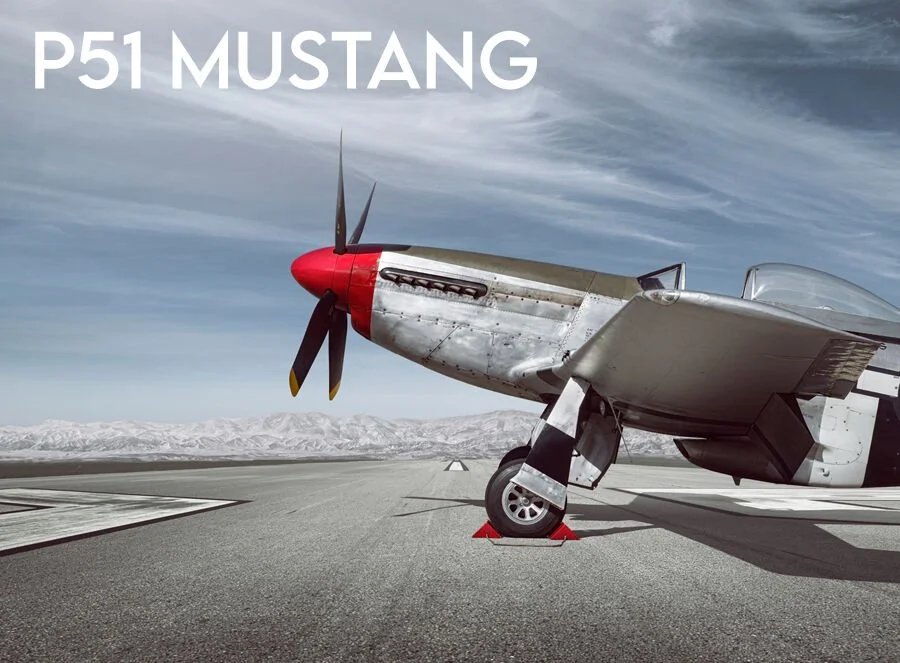The P51 Mustang
P-51D MUSTANG WD-C was built at the North American Aviation production line at Inglewood California in mid 1944 with the serial number 44-73877 and assigned to the USAAF from July 1945 – 1951. WD-C later took the colours of Col Donald Blakeslee, Commanding officer of the 4th Fighter Group, the Debden Eagles and is currently being maintained and flown by The Biggin Hill Heritage Hanger.
The P51 Mustang
Among one of the most famous fighters of World War II, the P-51 Mustang has its roots in both Britain and the USA. Originally overlooked by the USAAF, the P-51 did not see action with American forces until March 1943. Once its full potential had been developed, the USA realized that this aircraft had been ignored for far too long a time. With the forging of the American airframe with the British Rolls-Royce Merlin engine, it would be unmatched by any other piston aircraft of World War II.
In late 1939, with the likelihood of full-scale war in Europe a major concern, the British Royal Air Force was looking seriously at methods of quickly increasing its fighter strength. In April 1940, the British Air Purchasing Commission approached North American Aviation with the intent of having them build Curtiss P-40's for the RAF. Since the P-40 design went back to 1933, James H. "Dutch" Kendelberger, the president of North American offered to build an entirely new advanced fighter using the same Allison V-1710-39 engine used on the P-40. It was said that "Dutch" got his inspiration for the P-51 after a 1938 tour of aircraft industries in Great Britain and Germany. North American's only previous fighter experience was with the NA-50A, but Dutch collaborated with J.L. "Lee" Atwood to formulate an outline for the project. The British agreed on the new type, NA-73X, only on the stipulation that a prototype be on hand within 120 days. North American designers Raymond Rice and Edgar Schmued, the latter had worked for Fokker and Messerschmitt in 1925, immediately set about meeting the requirements. A prototype was finished in 117 days minus the engine, plus wheels which had to be borrowed from an AT-6 trainer. Six weeks later after several modifications, the aircraft took to the air on October 26,1940, piloted by Vance Breese at the controls who was one of the most famous test pilots in his day. The XP-51 reached 382 mph, exceeding the P-40's top speed by 25 mph. The P-51 was an immediate success and it even outperformed the Spitfire.
Col Donald Blakeslee
One of the greatest fighter pilots ever, Blakeslee led the 4th FG to become the leading American fighter unit in Europe. Discreet by nature, Blakeslee's aircraft was never decorated. He is credited with 15.5 aerial and 2 ground victories but some sources suggest his actual score to be much higher. He flew over 500 combat missions in 1,000 hours, more than any US pilot in WW2
The P-51D Mstang WD-C today
Currently the aircraft is being maintained and actively flown by The Biggin Hill Heritage Hanger based in the UK














